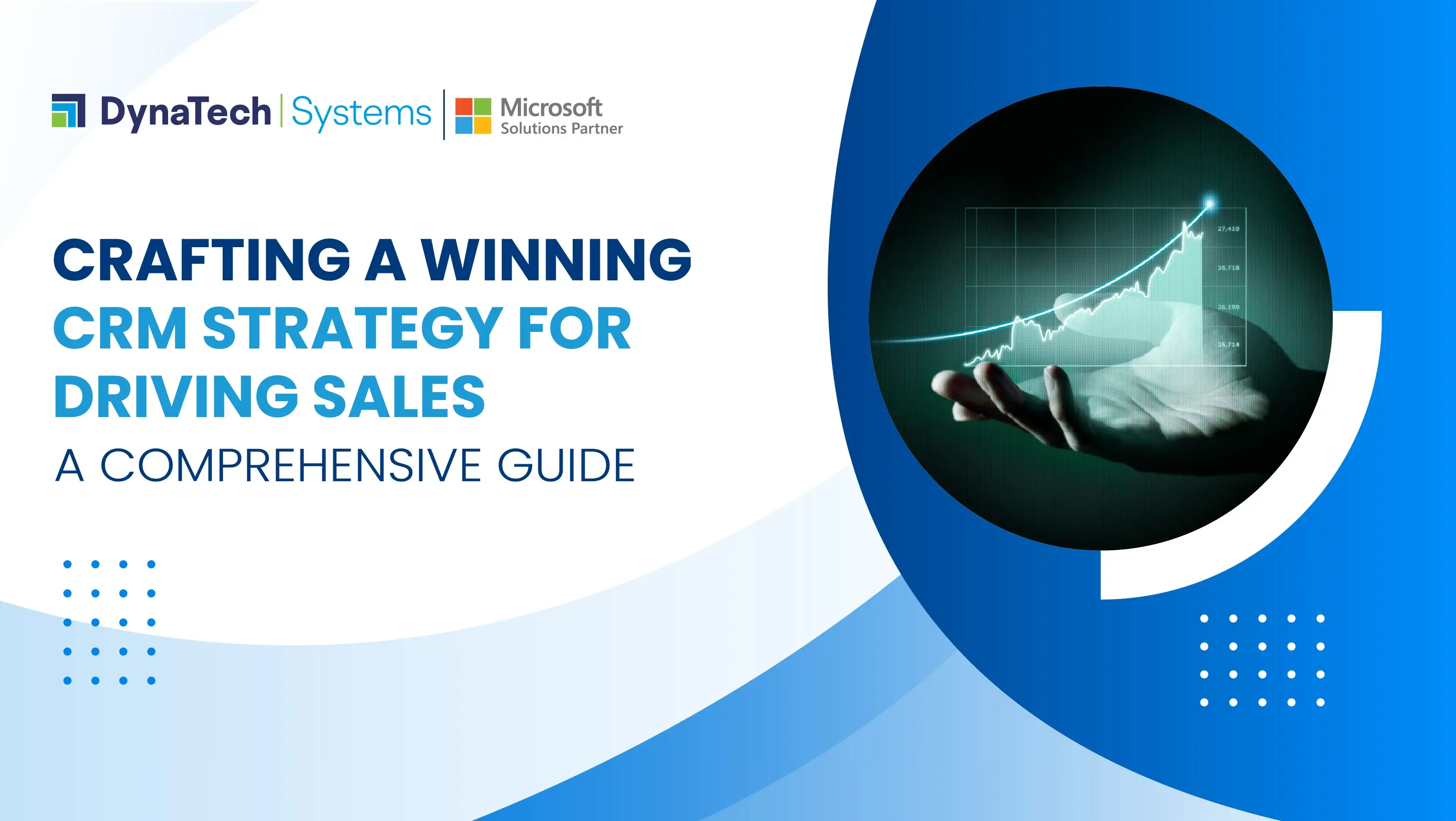Developing a successful CRM (Customer Relationship Management) strategy is essential for driving sales and nurturing long-term customer relationships. This multifaceted approach integrates human capital management strategies, leverages good CRM practices, and employs a variety of tactics to effectively manage customer relationships at every touchpoint.
This comprehensive guide can help you build a winning CRM strategy to boost your sales and multiply profits.
What Makes a CRM Strategy Successful?
A CRM strategy is a roadmap for your business that outlines specific actions and technologies to strengthen customer relationships, boost revenue, and, ultimately, increase profits. While CRM software is often used to manage customer interactions, a CRM strategy encompasses the entire process – the technology, the people involved, and the defined processes for engaging with potential and existing customers.
70% of sales reps think CRM closes more deals
The CRM lifecycle includes various stages to manage and improve customer interactions across sales, marketing, and customer service. These stages typically include:
1. Reach: Generate brand awareness through various marketing channels like social media and paid advertising.
2. Acquisition: Convert potential customers (leads) into paying customers through targeted marketing and sales efforts.
3. Conversion: Transform leads into paying customers.
4. Retention: Retain customers by providing top-notch customer service and maintaining consistent communication.
5. Loyalty: Build long-term, loyal relationships with customers.
Businesses can significantly improve their sales, marketing, and customer service efforts by effectively managing these stages, increasing customer satisfaction and revenue growth.
Unveiling the Benefits of CRM Strategy
A meticulously crafted CRM strategy serves as the backbone for achieving various objectives like:
|
Benefits |
Description |
|
Enhanced Collaboration |
Seamlessly align sales, marketing, and customer service teams to foster synergy and ensure a cohesive approach toward customer engagement. |
|
Consistent Customer Experience |
By orchestrating interactions across the customer lifecycle, a robust CRM strategy guarantees a seamless and gratifying experience at every touchpoint. |
|
Efficient Pipeline Management |
From lead acquisition to customer retention, a well-structured CRM strategy streamlines the pipeline, identifying and capitalizing on lucrative opportunities. |
|
Targeted Marketing Campaigns |
Leveraging comprehensive customer insights, businesses can tailor marketing campaigns that resonate with specific demographics, maximizing effectiveness. |
|
Informed Decision-Making |
Data-driven insights derived from CRM systems empower businesses to make informed decisions, optimizing performance and driving continual improvement. |
Key Components of CRM Strategy
- Data Management: Effective CRM begins with robust data management practices. This involves collecting, storing, and analyzing customer data to gain value-added insights into their behaviors, preferences, and purchasing patterns.
- Technology Integration: Implementing CRM software facilitates the automation of routine tasks, streamlines communication channels, and enables personalized interactions with customers across various touchpoints.
- Customer Segmentation: By categorizing customers into distinct segments based on demographics, behavior, or buying history, businesses can customize their marketing efforts and communication strategies to resonate with specific audience segments.
- Customer Lifecycle Management: Understanding the customer journey from awareness to advocacy allows businesses to create targeted campaigns and personalized experiences that address the needs and challenges of customers at each stage.
- Personalization: Customizing interactions and offers based on individual customer preferences enhances engagement and fosters a deeper connection with the brand.
- Feedback Mechanisms: Establishing channels for soliciting feedback from customers enables businesses to gather valuable insights, address concerns promptly, and continuously improve products and services.
- Cross-Channel Integration: Ensuring seamless communication and consistency across multiple channels, including email, social media, and in-person interactions, is essential for delivering a cohesive and unified customer experience.
Building Your CRM Strategy: What You Need to Know
- SWOT Analysis: Perform a SWOT analysis to analyze your company's strengths, weaknesses, opportunities, and threats.
- Vision Refinement: Developing a clear vision aligns teams towards common objectives, be it revenue augmentation, customer relationship enhancement, or superior experience delivery.
- Customer Data Audit: Delving into customer demographics, preferences, and feedback helps in getting a precise understanding of target audiences and their evolving needs.
- System Integration: Seamless integration of systems and data ensures a unified repository, enabling teams to operate cohesively with synchronized customer information.

Create A Successful CRM Strategy for Your Business
1. Define Clear Goals
Establish specific, measurable, achievable, relevant, and time-bound objectives that harmonize with overarching business goals. A robust platform like Dynamics 365 offers goal management features to track progress and ensure alignment across teams.

2. Identify Your Target Customer
Understanding your ideal customer profile is important for crafting buyer personas. Buyer personas detail the characteristics, needs, and behaviors of your ideal customers. By understanding who your customers are and why they purchase from you, you can attract high-quality leads with the right messaging and tactics, fostering strong customer relationships. You can combine existing customer data with market research to build your ideal customer profile.
Here are some methods to gather customer data:
-
Utilize website analytics to get demographic data about visitors and discover their preferred social media platforms.
-
Conduct interviews with your sales and customer service teams.
-
Directly interview customers or send out customer satisfaction surveys.
-
Organize a focus group with a selection of customers.

3. Map Out the Customer Journey
Once you've identified your target customer, map their entire journey from the initial stages to the final sale. Analyze their demographic data to understand where they spend time online. This will help you identify the best channels to connect with them. This enables you to identify pain points, opportunities for engagement, and areas for improvement to enhance the overall customer experience.

4. Planning 360-Degree Customer Experience
Equip teams with resources and processes to deliver a holistic customer experience, from marketing and sales to post-sales support. For instance, Microsoft Dynamics 365 CRM provides a comprehensive view of each customer, consolidating interactions, transactions, and preferences into a unified dashboard. By harnessing this 360-degree view, you can deliver personalized experiences to delight your customers at every touchpoint, from initial contact to post-purchase support.
5. Set KPIs
Customizable dashboards and reporting tools to define key performance indicators (KPIs) that align with your CRM objectives. Track metrics such as customer satisfaction scores, conversion rates, and average response times to measure the effectiveness of your CRM efforts.
Some relevant metrics you might consider include:
- Sales cycle length
- Sales close rate
- Customer satisfaction score
- Customer retention rate
- Customer churn rate
- Profitability per customer/account
6. Leverage Data for Productivity
A robust CRM platform enables you to consolidate customer data from various departments like marketing, sales, and customer service into a unified dashboard. Harness the power of CRM data for enhanced productivity and efficiency. With advanced analytics and ML capabilities, you can derive actionable insights to optimize processes, identify trends, and make data-driven decisions.
7. Maintain Consistent Tone and Messaging
Keep a consistent tone and messaging across all customer interactions within your CRM platform, adhering to brand guidelines and resonating with target audience preferences. Utilize customizable email templates and communication workflows to ensure a cohesive and personalized experience.
8. Personalize Customer Experiences
A cutting-edge platform like Dynamics 365 CRM enables personalized interactions using customer data to tailor communication, offers, and recommendations on the basis of individual preferences and behaviors. Leverage features such as dynamic content and personalized recommendations to foster deeper connections and bolster loyalty.|
Statistics |
Percentage |
|
Consumers more likely to purchase with personalization |
80% |
|
Consumers deterred from brands with poor personalization |
63% |
|
Customers find impersonal content frustrating |
42% |
9. Embrace Automation & Track Performance
Automate repetitive tasks and workflows to boost efficiency and streamline operations. By automating routine processes such as lead nurturing, follow-up emails, and data entry, you can free up resources for high-impact endeavors and accelerate sales cycles. Utilize analytics and reporting capabilities to track team performance and measure the impact of your CRM initiatives. Continuously monitor KPIs, analyze trends, and iteratively refine strategies to optimize outcomes and drive business growth.
Wrapping Up
A well-defined CRM strategy is an invaluable asset for any business looking to leverage customer relationship management software. By following the steps outlined above and tailoring them to your specific business needs, you can create a successful CRM strategy that strengthens customer relationships, boosts revenue, and drives long-term business success. Remember, a CRM strategy is an ongoing process. Regularly monitor and adapt your new strategies to ensure it perfectly aligns with changing business goals and market trends.
Bonus Tip: Invest in a robust CRM platform like Microsoft Dynamics 365 to unleash the maximum potential of your enterprise and effectively achieve your goals.




























